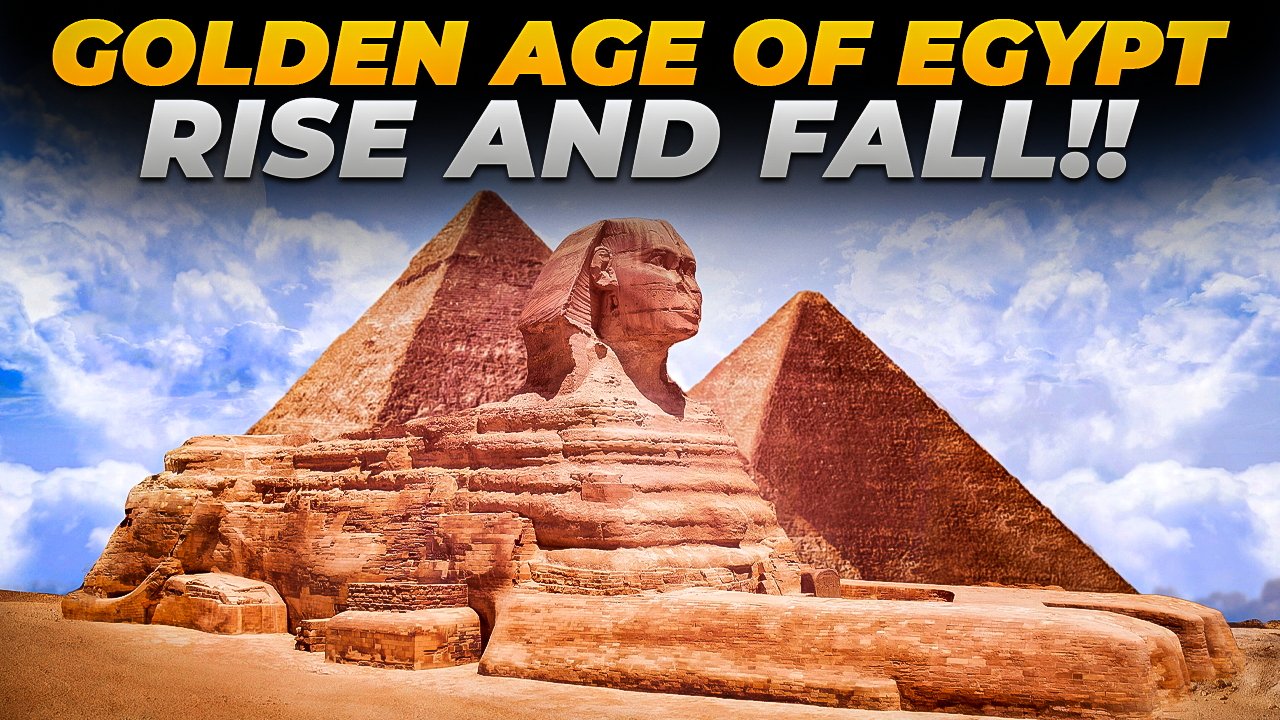The Rise and Fall of Egypt’s Golden Age

Ancient Egypt’s New Kingdom represents the pinnacle of its civilization, a time when pharaohs ruled with divine authority, monumental architecture flourished, and military campaigns secured Egypt’s dominance in the ancient world. Spanning from 1550 to 1070 BCE, this golden age was defined by unprecedented wealth, cultural achievements, and political sophistication. Yet, even the mightiest empires are not immune to decline. Join us as we delve into the rise of Egypt’s New Kingdom, its glorious achievements, and the enigmatic factors that led to its fall.
The Birth of a Golden Age: Egypt’s New Kingdom
The New Kingdom was born out of the ashes of the Second Intermediate Period, a time of political fragmentation and foreign rule. Around 1550 BCE, Ahmose I, founder of the 18th dynasty, expelled the Hyksos invaders and unified Egypt, ushering in an era of centralized power and imperial ambition. This marked the beginning of a golden age where Egypt emerged as a military and economic superpower.
Pharaohs such as Thutmose III, often called the “Napoleon of Egypt,” led military campaigns to expand Egypt’s borders, conquering Nubia in the south and parts of the Levant, including Canaan and Syria. These conquests secured vital trade routes and resources, filling Egypt’s coffers with gold, incense, ivory, and exotic goods. With wealth flowing in, the pharaohs transformed their kingdom into a cultural and architectural marvel.
Architectural Brilliance and Cultural Flourishing
The New Kingdom’s architectural achievements remain some of the most iconic in history. Thebes, the religious and political capital, became a showcase of monumental construction. The Karnak Temple Complex, dedicated to the god Amun-Ra, featured the awe-inspiring Hypostyle Hall with its 134 colossal columns. Meanwhile, the Luxor Temple and its sphinx-lined avenue played a key role in religious festivals, reinforcing the divine connection of the pharaohs.
Perhaps most famously, the Valley of the Kings served as the royal necropolis, housing elaborately decorated tombs such as that of Tutankhamun. Discovered in 1922 by Howard Carter, Tutankhamun’s tomb revealed a treasure trove of gold masks, chariots, and jewelry, offering a glimpse into the opulence of even a relatively minor pharaoh.
Art and literature also thrived during this period. Wall paintings depicted gods, pharaohs, and daily life with vibrant colors and intricate detail. The “Book of the Dead,” a collection of funerary texts, and innovations in sculpture, like the realistic portraits of Akhenaten and Nefertiti, showcased the sophistication and creativity of New Kingdom culture.
Power and Diplomacy: The Pharaohs’ Reign
The pharaohs of the New Kingdom were not only warriors but also skilled diplomats. The Amarna letters—clay tablets from the reign of Akhenaten—reveal an extensive diplomatic network with correspondence between Egypt and other major powers such as Babylon, Assyria, and the Hittites. One of history’s earliest recorded peace treaties was signed between Ramesses II and the Hittite king Hattusili III, showcasing Egypt’s diplomatic sophistication.
Pharaohs used their divine status, reinforced through propaganda and monumental art, to consolidate their authority. Temples and statues depicted rulers as gods, ensuring loyalty from both nobles and commoners. However, the growing power of the priesthood, particularly the priests of Amun, began to rival that of the pharaohs, sowing seeds of internal conflict.
The Mysterious Decline of the New Kingdom
By the 12th century BCE, the New Kingdom began to unravel, its fall shrouded in mystery and marked by a convergence of internal and external challenges. Economic strain played a significant role as the cost of monumental projects, military campaigns, and court extravagance depleted the treasury. Corruption and mismanagement further eroded central authority, with tomb robberies in the Valley of the Kings serving as stark evidence of instability.
Social inequality added to the unrest. The gap between the elite and laboring masses widened, and the first recorded labor strikes, such as those at Deir el-Medina, highlighted growing dissatisfaction. Environmental factors, including prolonged droughts and poor Nile floods, disrupted agriculture, causing famine and grain shortages.
External pressures compounded these issues. The arrival of the mysterious “Sea Peoples” disrupted the Eastern Mediterranean, leading to costly battles during the reign of Ramesses III. Additionally, climate change and the collapse of Bronze Age civilizations like the Hittites and Mycenaeans disrupted trade, weakening Egypt’s economy further.
Lessons from the Fall of a Great Empire
By the end of the 20th dynasty, Egypt was politically fragmented, with rival power centers in Thebes and Tanis. The priesthood of Amun wielded near-kingly authority, foreshadowing the Third Intermediate Period—a time marked by weakened central power and foreign invasions.
The story of Egypt’s New Kingdom is one of unparalleled rise and enigmatic decline. Its golden age gave the world timeless monuments, sophisticated art, and groundbreaking diplomacy, but also serves as a cautionary tale about the fragility of even the most powerful empires. The combination of economic strain, environmental challenges, social unrest, and external invasions reveals the complex interplay of factors that can lead to the fall of a civilization.
Conclusion
The New Kingdom of Egypt stands as a testament to human ambition, creativity, and resilience. From the grandeur of Karnak and the Valley of the Kings to the untold stories of laborers and religious controversies, this era offers a fascinating glimpse into a civilization that shaped the ancient world. However, it also reminds us of the transient nature of glory and the importance of adaptability in the face of challenges.
What lessons can we draw from Egypt’s golden age for our modern world? Share your thoughts in the comments below! Don’t forget to explore more historical journeys with us by subscribing to our blog and sharing this story with history enthusiasts. 🌍✨
